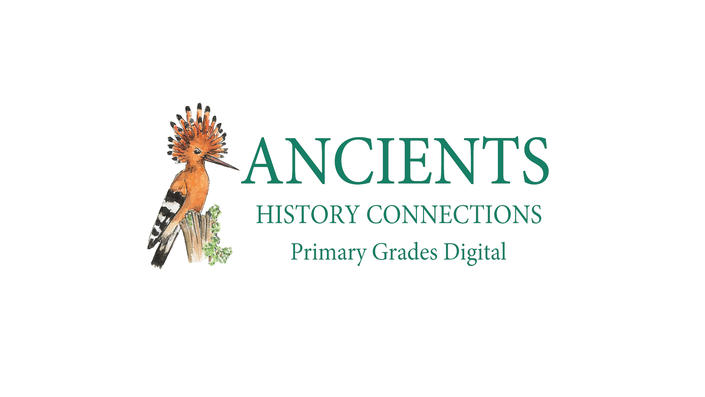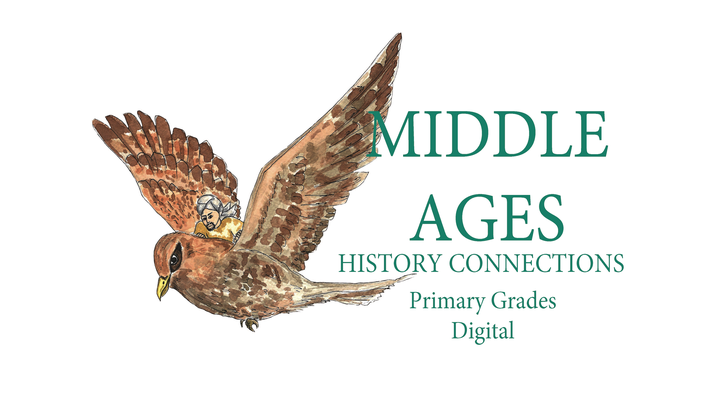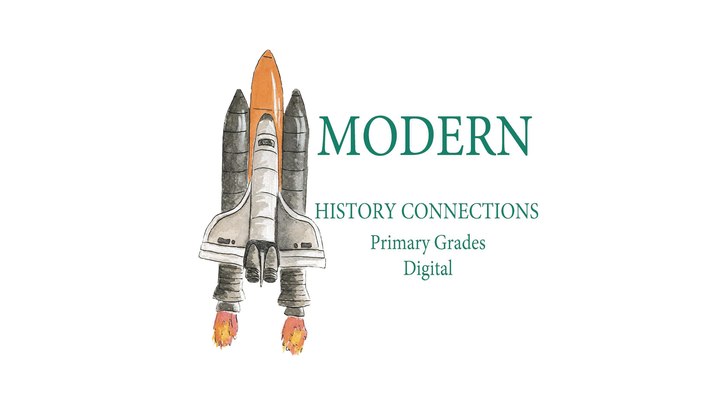
Early Modern
Primary Grade 3
The early modern takes you on a journey through history. It starts with the People of the Pacific, visits different empires ruling at the time and ends with the industrial revolution and life in new towns .
Through our journey we will learn about several Muslim empires including the Ottomans, the Mughals and the Safavids. We will learn about how some empires rise and fall.
This book integrates Islamic concepts into global history and is packed with hands-on activities, visuals. Additionally, the way information is presented caters to different learning styles, in accordance with our unique teaching methodology IDEALS (See more about this below).
Digital Format
Not an e-book, not an e-course
We have created a unique format for our Early Modern Primary grade 3 books. It is not an e-book, and it is not an e-course.
Our digital format allows parents to have all the materials in one place and teach their child. Lesson plans are placed side by side with the worksheets and resources.
All you need for the entire year in one place.
No shipping needed!
What is Included?
The History Connections Book 3 – Early Modern digital program includes the following:
- History Connections Book 3– Early Modern
- History Connections Book 3 – Early Modern Maps & Worksheets (Needs to be printed)
- World Wall Map & Wall Icons (Needs to be printed & assembled)
- Sea of History Poster (Needs to be printed & assembled)
- Usborne Internet Linked History Encyclopedia
- History Intersections, edition 2
That is a total value of $137!
If you pay for the entire year, you only pay $119.99!
That is less than 10$ per month!
Don't want to pay upfront?
A payment plan is available for $9.99 per month for 13 months.
All you need for the entire year in one place online!
No hassle with shipping, no heavy books to carry!
You will get access for 13 months to complete the 30 weeks of lessons.
Not sure yet if this is there right fit for you?
Try the curriculum for a day in a FREE trial!
Example Curriculum
Elements in the Lessons
All lessons have scripted discussion questions and detailed instructions. The digital program us broken up into 30 weeks. Each week will list the material needed for that week. All resources are included. You will need to prepare the materials for the activities, which are listed separately every week for your convenience. In every lesson there are several elements:
The Task Card on the first page of every weekly lesson lists an overview of the topic and the materials needed.
Materials: The teaching materials needed are listed in the first column.
Time: This time indication is based upon twice a block of 45 minutes.
Inquiry: throughout this curriculum, the parent is modeling asking questions. Students learn how to ask questions and extract information from images and maps. This is a pre- research skill.
Discussion: Discussion questions help students recap the major events in a story and practices comprehension.
Activities: Every week the child will complete an activity that relates to the topic of the week. This will help students internalize the information covered. Activities are varied and alternated, in order to keep students engaged.
Tracing a Map: The program asks the child to trace the Location Maps (provided). The action of physically tracing a map assures the information is integrated into memory. The mapping activity allows students to get familiar with geography and teaches them to pay attention to certain geographical landmarks, such as rivers and seas, mountain ranges and oceans.
World Wall Map & Wall Icons: Every week, the child will cut out and stick small icons on the World Wall Map to remember the events that have been discussed. It also gives a sense of where most of the events are happening on a global scale.
Sea of History: The Sea of History poster is used with lessons that are directly about Muslims such as lessons about Muslim empires that emerged in that period. At the end of the year, the child will have a timeline that depicts all the important Muslim events in the Early Modern era, one after the other. This helps children visualize information.
Extra Resources: At the end of every lesson, there are extra resources listed. We recommend that if your child expresses a particular interest in a topic, you allow extra time for the extra resources. Extra resources are optional and not part of this curriculum.
History Connections
History in Context
Our History Connection series covers the ancients all the way up to the modern history and current issues. This series is intended for grade 1 through 8.
Every year students will take a chunk of this history. In the first book, students will cover from Creation to about 500 C.E. In the second book, they will cover from 500 C.E. until about 1650 C.E. The third era will cover from 1650 C.E. until the Industrial Revolution, approximately 1850 C.E. The last era, the Modern Era, will cover from 1850 C.E. until our current day.
All Eras have Islamic History integrated within global history, with more attention and time spend on important topics in the history of our Ummah.
The four books in this curriculum are consecutive, not only in chronological information but also in building skills. The first book is best suited for early primary students, grade 1 and 2, although older students would benefit from this program as well. Should you start with an older student, up to grade 4, we do recommend starting with Book 1. However, we will suggest a few adjustments below.
Learning about what happened in the past is essential to understand what is happening in our current society. Giving children a sense that they belong to a larger community is essential for their sense of belonging. Learning about a proud heritage teaches children self-esteem. Infusing this knowledge with Islamic concepts, teaches them good character. Mastering 21st century skills allows them to function in modern society.
This series does all that, and more.
Each curriculum covers a full year of 30 weeks. The curriculum is gradually progressing in skills and knowledge and is packed with activities and extra resources. Islamic concepts and knowledge are integrated as part of the history content.
IDEALS
Our unique approach to learning is summed up in the acronym IDEALS, which covers several methodologies and skills we believe should be covered in all educational programs,whether for primary students or adults. IDEALS stands for Inquiry Based Learning, Differentiated Learning, Experiential learning, Aptitude Training, Lens of Islam, and Social-Emotional Learning.
Inquiry-based learning is an approach to learning that emphasizes the student's role in the learning process. Rather than the teacher telling students what they need to know, students are encouraged to explore the material, ask questions, and share ideas.

Differentiation means tailoring instruction to meet individual needs. Differentiation is a framework for effective teaching that involves providing all learners a range of different avenues for understanding new information.
Experiential learning is the process of learning through experience, and is more specifically defined as "learning through reflection on doing".
Aptitude Training determines how well-equipped students are to make good decisions and solve problems in their academic, professional and personal lives. Skills are the building blocks that allow students to apply the knowledge they acquire in an academic context to real world problems and situations.
Lens of Islam integrates Islamic knowledge into elements of the academic program in order to provide students with an Islamic lens to view the world and to create connections between the deen and the world at large. Viewing the world through an Islamic lens will increase a sense of purpose and meaning, and allows students to foster their Islamic identity and live with integrity.
Social-emotional Learning is the process through which students acquire and apply the skills necessary to manage emotions and social relationships. According to Goleman, social-emotional intelligence “emerges as a much stronger predictor of who will be most successful, because it is how we handle ourselves in our relationships that determines how well we do once we are in a given job”.
Related Products
Other levels in our digital History Connections program




